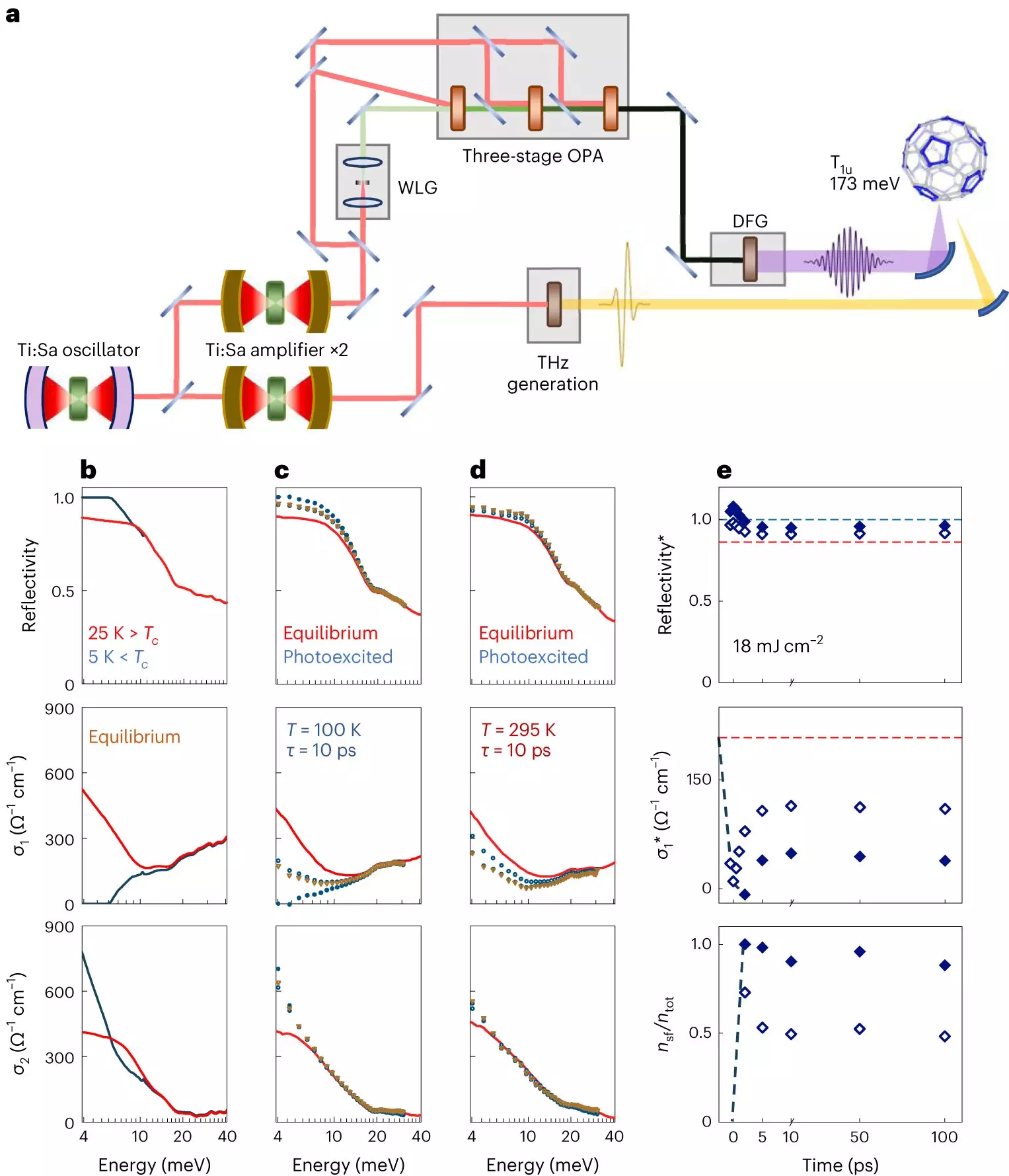Superconductivity, the ability of materials to conduct electrical current with virtually no resistance, has long been a subject of fascination and research for scientists. Discovering ways to enhance superconductivity could greatly benefit various technological applications, such as electronic devices and energy systems. K3C60, an organic superconductor, has shown potential for light-induced superconductivity. In a recent study published in Nature Physics, researchers from the Max Planck Institute for the Structure and Dynamics of Matter, Università degli Studi di Parma, and University of Oxford have made significant progress in enhancing the light-induced superconductivity of K3C60.
For approximately a decade, Andrea Cavalleri and his team have been investigating the possibility of using light to enhance superconductivity. They have successfully demonstrated this phenomenon in certain materials like cuprates, charge transfer salts, and K3C60. In their previous experiments, they achieved superconductivity with photon energies ranging from 80 to 165 meV (20–40 THz). However, their new study seeks to explore excitation at lower energies, between 24 and 80 meV (6–20 THz), using a previously inaccessible strategy.
To investigate the light-induced superconductivity in K3C60 at lower energies, the researchers employed a terahertz source that generates narrow-bandwidth pulses. This source combines near-infrared signal beams from two distinct phase-locked optical parametric amplitudes. By utilizing this specialized optical source, the researchers were able to target specific molecular vibrations at their resonance frequency. These vibrations couple with the electronic states of the material and enhance the pairing and coherence required for superconductivity. The researchers discovered that a certain molecular vibration, at a frequency of 10 THz, yielded particularly favorable results.
While the underlying physics is not fully understood, Cavalleri’s team has shed some light on the possible mechanisms behind photo-induced superconductivity in K3C60 and potentially other superconductors. The researchers speculate that the driven vibrations of the molecules interact with the electronic states, leading to an enhancement of the superconducting properties. This groundbreaking study not only provides insights into the mechanism of light-induced superconductivity but also introduces a strategy that could potentially prolong the duration of this state. Notably, the prolonged presence of photo-induced superconductivity could have exciting implications for the development of light-driven quantum technologies.
The recent study by Cavalleri and his collaborators has yielded highly promising results. They achieved a 10 ns long-lived superconducting state at room temperature, which is a significant breakthrough. This outcome opens up possibilities for the future development of quantum devices powered by light. Imagine a world where our electronic devices and energy systems are driven by light-induced superconductivity—a new era of efficiency and sustainability may be within reach.
The quest to enhance superconductivity has advanced significantly with the recent research on light-induced superconductivity in K3C60. Through their innovative experimental approach and keen observations, Cavalleri and his team have made strides in understanding the mechanisms behind this phenomenon. Their findings open up exciting opportunities for further exploration and potential applications in the field of light-driven quantum technologies. As scientists continue to push boundaries in the study of superconductivity, the future may hold remarkable breakthroughs that revolutionize various technological domains.



Leave a Reply